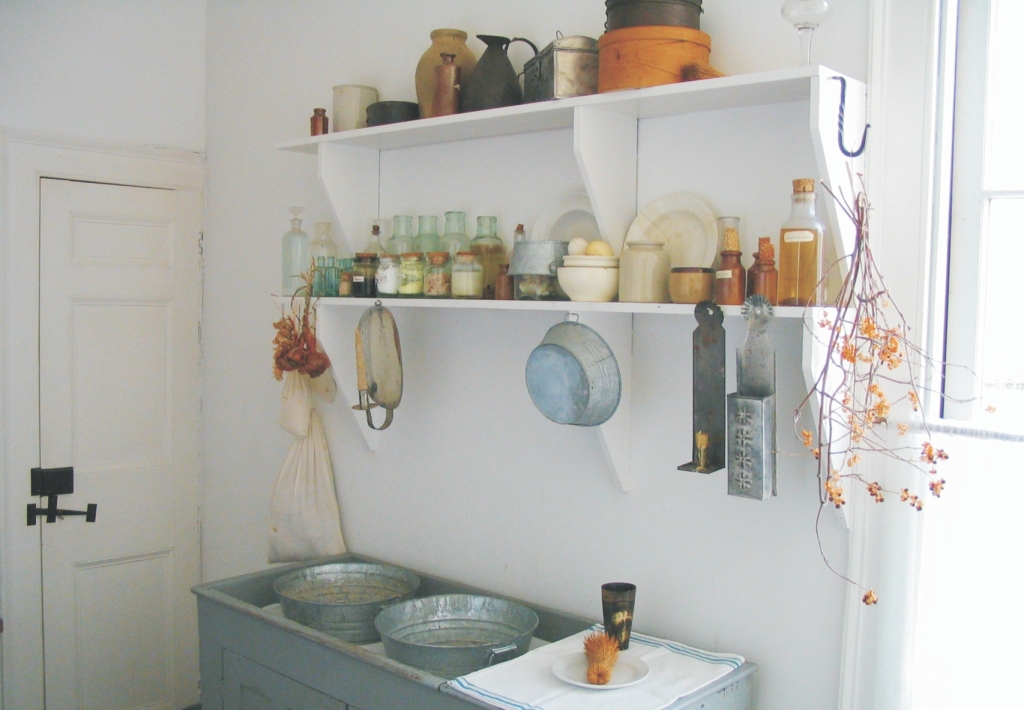Editorial By: Janet Cobban | Photography By: Don Waffle

Stroll up the path, past some barns and a split rail fence, until you see a clapboard house with a cedar roof, a few feet from the shore of Lake Erie. Welcome to the John R. Park Homestead Conservation Area.
This nineteenth century farmstead comprises the house, eleven frame barns and outbuildings, an heirloom orchard and a garden. Now operated as a living history museum by the Essex Region Conservation Authority, the almost six hectare property includes a wetland nature trail, a Lake Erie beach and mature Carolinian trees.

Aerial View
John Richardson Park and his brothers, Thomas and Theodore, were born in Massachusetts and immigrated to Upper Canada in the l820s and 1830s. They purchased this property in 1833. The Parks were important Essex County businessmen: owners of a Great Lakes shipping line, a general store, sawmill, and large land holdings. John was a Councillor and Treasurer for Colchester Township and a founding member of the local agricultural society. Following the Parks, the farm was owned for two generations by the Fox Family, also prominent in the community.

The Homestead is located in the midpoint of the “New Settlement” which was surveyed in 1787 by Thomas Smith into long, narrow 200 acre lots, fronting on Lake Erie. Land grants were given to disbanded British soldiers and United Empire Loyalists. Some of those original families – the Ilers, for example – still live in the area. More modern maps locate the Homestead 45 minutes southeast of Windsor, Ontario, near the village of Colchester.

The John R. Park House is significant as a rare Canadian example of American Greek Revival domestic architecture. This architectural style probably reminded the Parks of their New England home. The frame house, built in 1842, has a two-storey centre block with north and south gables and fanlights, balanced by one storey wings to the east and west. The wings were once symmetrical, but an addition was added on the east side in the late nineteenth century. The location, right on the shore of Lake Erie, provides stunning views over the water. You can easily imagine the family watching for one of their steamers or schooners from the very large nine-over-six, south facing windows.

Lumbering was a major industry in nineteenth century Essex County and the black walnut trim in the house came from local trees, probably cut at the Park family’s own sawmill. The interior doors, dining room mantel and pass-through cupboard are all black walnut. The doors even have their original locks and hardware.

The upstairs floors are yellow poplar or tulip wood from the Carolinian Tulip Tree. In late 2008 a gigantic piece of tulip wood – 30 feet long, 15 inches wide and 4 inches thick – was discovered in the house attic. Its purpose was simply to support the soffit trim!

The Fox family re-sided the house in 1899. Some signed boards and old newspapers were found in the exterior wall as proof. A small section of the original 1842 clapboard is preserved in the east gable attic. When the clapboard was renewed in 2008, this profile was matched and painted to be the appropriate shade of white.


The Homestead has three brick chimneys with two Rumford fireplaces and two heating stoves. The large kitchen fireplace is still used almost daily by visiting school children who make popcorn or cookies. The museum hosts “Locavore” events too, featuring foods and wines from the region.

In 1978, the site opened to the public as a museum and interprets the history of the Park family, the settlement of Essex County and the natural resources of the region.
I was not aware of this site, but will certainly visit this summer, should the Covid restrictions be lifted sufficiently to allow this.
Thanks for a wonderful writeup. I have added it to my local travel wish list. I am always impressed with how much of an original house is preserved. But a well built home maintains its quality through time.